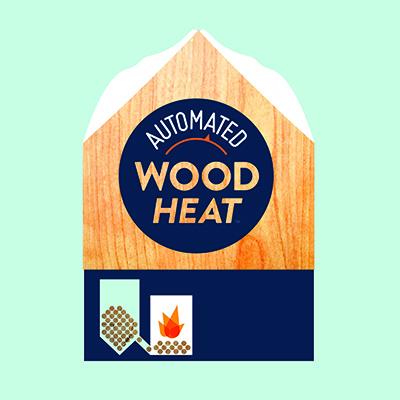Understanding Adoption of Sustainable Forest-Based Heating Alternatives for Northern Forest Homes and Communities

Public and private incentive programs have encouraged home and business owners to convert to high-efficiency, low-emission, automated wood pellet heating (AWPH) systems as a strategy to promote renewable energy and support local economies in the Northern Forest of Maine, New Hampshire, Vermont, and New York. Wood pellet heating can be carbon positive depending on feedstock mix, harvesting methods, and location. Using pellets eliminates risk of spreading forest pests (compared to moving firewood), when precautions are taken in transporting wood to pellet plants.
Despite efforts of incentive programs, relatively few building owners have adopted of these systems. NSRC researchers examined social, economic, policy, and environmental factors that affect building owners’ decisions to transition from fossil fuels to automated wood pellet boilers and furnaces that use regionally-sourced wood pellets. Researchers interviewed 60 consumers, technology and fuel suppliers, NGOs, and state agency personnel and conducted a 4-state survey of adopters and informed non-adopters of AWPH systems.
Early adopters of AWPH systems are largely driven by both environmental values (desire to find alternative to fossil fuels, concern for air quality, and belief in climate change) and social values (support for the local economy and wood products industry). AWPH consumers are also concerned about upfront costs and availability of technical support and bulk delivered pellets. Financial incentives, offered by all four states, were highly influential, but additional decision support offered by a non-profit (site visits, informational workshops, local print media) were rated highly where available. These additional supports enabled a broader range of people (lower income, more risk averse) to choose AWPH.
